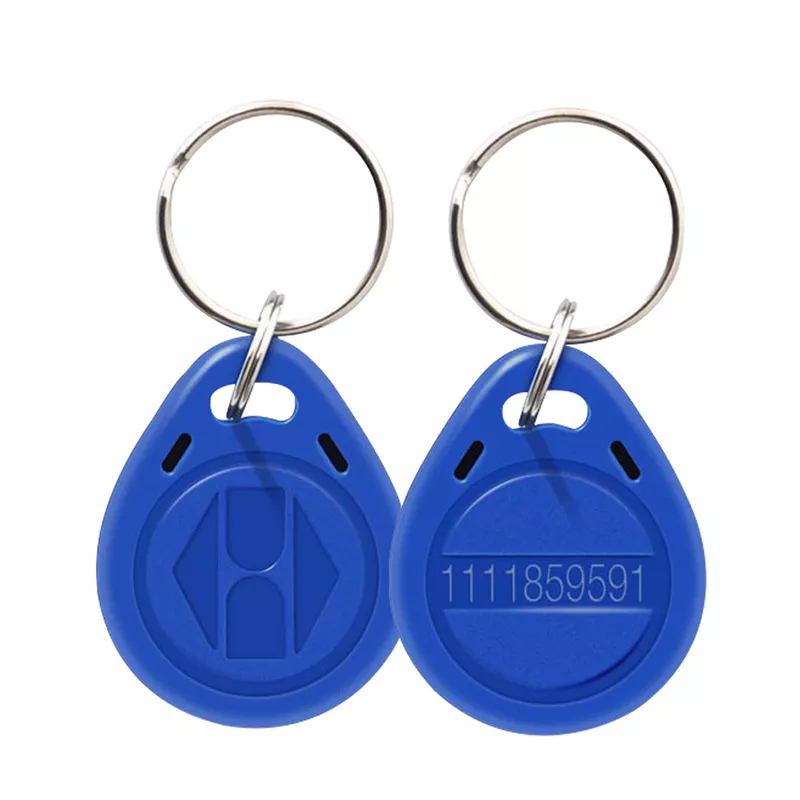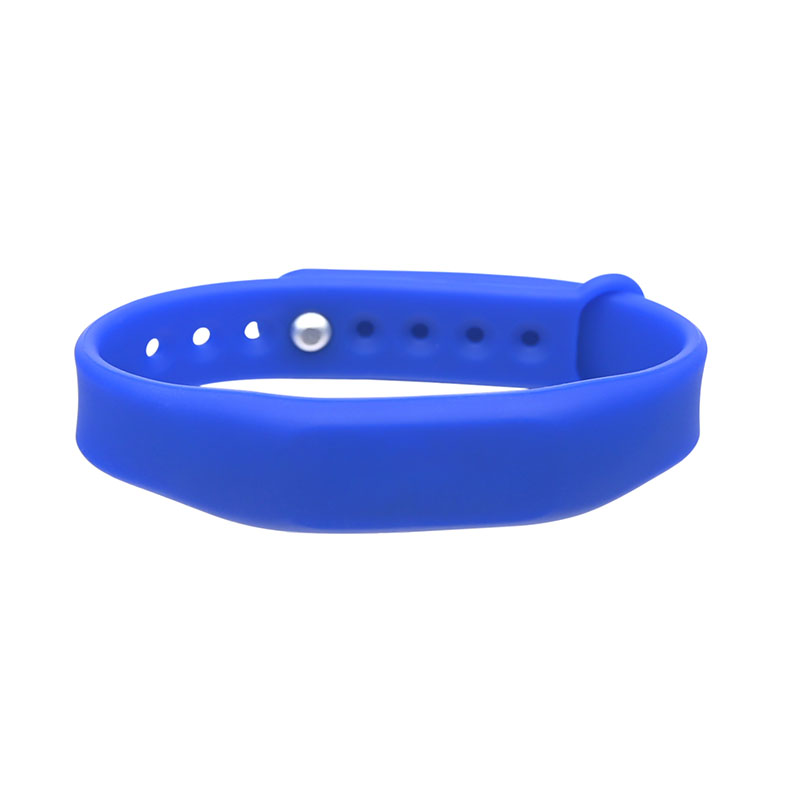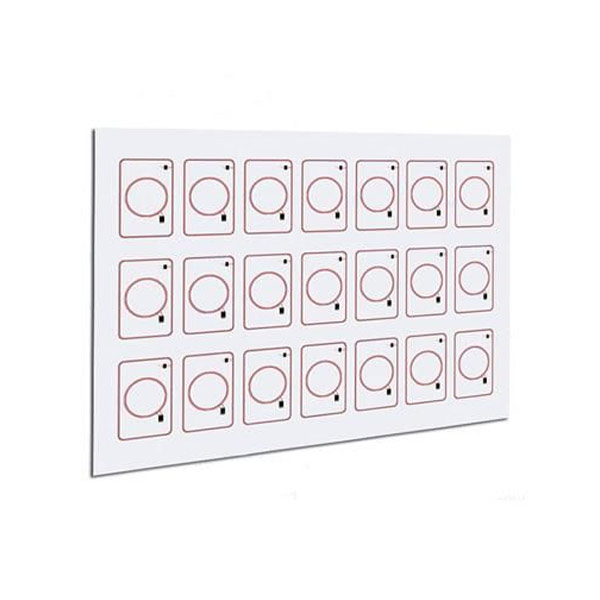RFID Smart Card: A Smart card is defined as an electronic data storage system, possibly with additional computing capacity (microprocessor card), which for convenience is incorporated into a plastic card the size of a credit card.

If we break down that definition into three segments, we can learn a little more about the physical makeup of a Smart card, for instance:
Physically, Smart cards are typically the size, shape, and material of a credit card. Meaning about 8.56 x 5.397 cm or 3.375 x 2.125 in with a thickness of 1.9 cm or 0.76 in.
Smart cards are used to store digital/electronic data.
Smart cards can do more than just store data if they are manufactured with microprocessors.
Before going into the details of what makes up a Smart card, it is important to distinguish between the many types of Smart cards.
Types of Smart Cards
Smart cards have been available on the market and used since at least 1984 when the first telephone Smart cards were released. Since then, more types and added subtypes with new features and capabilities have increasingly become available, making it important to distinguish one type of Smart card from another.
The best way to categorize Smart cards is:
How the Card Data is Read & Written – Contact, Contactless, & Dual Interface Cards
Contactless can be further divided by type of RFID used to communicate, either Low Frequency (LF), High Frequency (HF), or Ultra High Frequency (UHF).
Chip Type & Capabilities – Memory vs. Microprocessor Cards
How the Card Data is Read & Written - Contact vs. Contactless Smart Cards
A Smart card can be written and read via contact with a reader or simply coming within a certain range of a reader, depending on the type of chosen interface and Smartcard chip.
Contact Smart Card
Contact Smart cards have a metal chip on the outside of the card that must come in contact with the reader in order to be read. In order to read or write a contact Smart card, you must insert the card into the reader so that the electronic data can be exchanged. A common example of this is a typical credit card with a metal chip on the outside.

Contactless Smart Card
A contactless Smart card does not have a metal chip on the outside, but instead has an integrated chip on the inside with an integrated antenna. To read or write to these Smart cards, they simply have to be within the range of the reader. The range that these cards are able to be read at depends on which frequency band they communicate on – either Low Frequency (LF), High Frequency (HF), or Ultra-High Frequency (UHF).
LF Smart Cards – Also called proximity or vicinity cards, LF Smart cards use RF waves to communicate on the 125 kHz frequency band. These cards are most often used for access control, loyalty cards, and identification because of the low read range and available security features.
HF Smart Cards – Smart cards that use the HF range of 13.56 MHz (including NFC), are the most commonly used type of Smart card. These Smart cards are used for a large variety of applications including hotel rooms, access control, payment cards, and more.
UHF Smart Cards – UHF RFID Smart Cards have more read range than HF and LF cards which allows them to facilitate access from further away. Applications that benefit from the added read range include vehicle access to parking lots or gated neighborhoods, vehicle tolling passes for toll roads or restricted access roads.
Dual-Interface Smart Cards
Some cards have both a metal chip for contact reading and an integrated chip and antenna for contactless reading to allow for both functionalities.
Chip Type & Capabilities
On a more technical level, Smart cards can also be categorized by the chip type and functionality, which divides these cards up into two categories - ‘Memory’ cards, and ‘Microprocessor’ cards. It is important to understand the variation between these two types of Smart cards because they have key security, memory, and cost differences.
Memory
The most common, and least expensive type of Smart cards are ‘Memory’ cards. The data stored on memory Smart cards is stored as EEPROM data or Electrically Erasable Programmable Read-Only Memory and non-volatile memory. These cards simply store data, but they are capable of a basic level of security, like a 4-digit pin to access the information.
Microprocessor
‘Microprocessor’ Smart cards store data as well, but they have an onboard 8-bit or 16-bit microprocessor, a segmented memory, and an operating system, which is contained on the ROM (Read-only memory). The memory is segmented into three parts - ROM, RAM (Random-access memory), and EEPROM. Because a microprocessor is included in this type of Smart card, this type of Smart card is capable of complex security features to enable memory access - like cryptology, algorithms, and complex mathematical computations all handled by the operating system.(3) A common type of microprocessor card is an EMV Smartcard – which means Europay, MasterCard, and Visa card like a debit or credit card.
What is Inside Smart Card?
A Smart card is made up of layers of plastic or PVC that are printed separately and then laminated together. Once the solid structure has been assembled with several layers of plastic material, the card is cut into shape typically using a die-cut process.
If the chip is an integrated, contactless chip, one of the inner layers of PVC will have the chip and antenna glued on top (with or without a microprocessor). Image above.
If it is a contact Smart card, the metal chip is embedded on a higher layer with one or two layers on top with small cut-outs for the chip to fit into (with or without the microprocessor). Image above.
What is a Smart Card Used For?
Banking/payment (EMV Smartcards)
Loyalty and promotions
Access control
Hotel Room access
Identification
Ticketing
Parking and toll collection
Which Type of Smart Card is Best for My Company?
Because there are few different options for Smart cards, as shown above, it is important to select the type that will work best for your company’s needs. The most important factors are the read/write method, memory and microprocessor options, and read range if contactless Smartcards are chosen.
Read/Write Method
Because contactless Smartcards are the wave of the future and much faster than typical magnetic stripe and contact Smartcard transactions, most companies are switching to contactless Smartcards. Below is more information about the pros and cons of Contactless Smartcards.
Pros of Contactless Smartcards:
Faster
More secure
Cleaner (less transfer of germs)
More reliable than Magnetic stripes
Smart devices can serve as Smartcards as well
Cons of Contactless Smartcards:
Readers are not available in all locations
Can still fail to read at times, but less often than magnetic stripe cards
Memory/Microprocessor
Once a company decides between contact or contactless, the next step is to decide the memory and security needs for the specific card. Smartcards with simple memory needs like basic re-writable data bank can choose the less expensive memory Smartcards.
Companies that need more advanced security measures and a few different memory options like ROM, RAM, and EEPROM would be better suited using a Smartcard that has a Microprocessor as well.
Contactless Read Range
If a company does decide on a contactless Smartcard, another important decision is deciding the required read range for the application.
For typical tap-to-use applications, like loyalty and identification cards, an LF Smartcard operating on the 125 kHz frequency band would be ideal.
For hotel room keys or access control cards requiring a few inches of read range would be better suited, an HF Smartcard that operates on the 13.56 MHz frequency band is suggested.
For parking lots or other vehicle entry points requiring a few feet of read range, a UHF Smartcard that operates on the 865 – 960 MHz frequency band is suggested.






